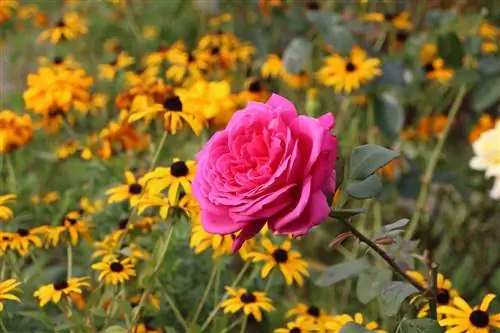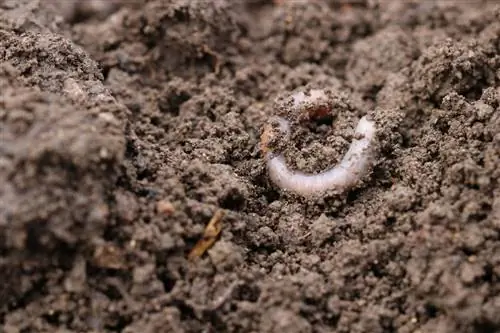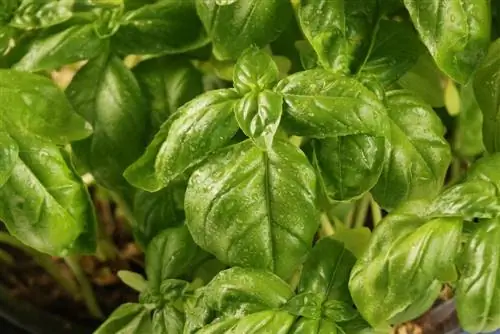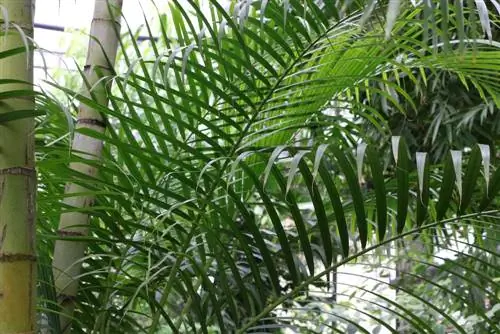- Author admin [email protected].
- Public 2023-12-17 03:39.
- Last modified 2025-01-24 12:45.
The fact that cacti are considered particularly easy to care for is probably primarily due to the fact that they hardly need to be watered compared to conventional potted plants. Rare watering also means that the cacti can only cover their entire nutrient and fluid needs from the soil over a relatively long period of time. And that is exactly where the biggest challenge lies in producing your own cactus soil.
Criteria of good cactus soil
First of all, it should be noted that most cacti are real survivors that can also thrive in ordinary potting soil if necessary. However, if you really care about the well-being of your cacti, you should use special cactus soil that is best suited to the needs of this fascinating plant genus in general and the needs of the cactus species in question in particular. The general criteria that make up good cactus soil include, first of all, that the soil is permeable to air and can store as much moisture as possible without forming waterlogging, becoming muddy or hardening completely when it dries out. It is also important that the soil is very nutrient-rich. In order for a cactus to be able to absorb and process nutrients, the pH value of its soil must be correct. As a result, the pH value is also one of the most important points that deserve overriding consideration when purchasing and producing cactus soil. Although cacti per se prefer slightly acidic soil, the same pH value can be too high for one type of cactus and too low for another type.
Tip:
Since the pH value of the cactus soil is extremely important, you should check it in advance with a suitable analyzer or appropriate test strips before placing a cactus in it.
Components of cactus soil
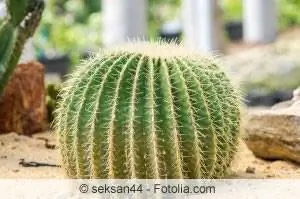
Probably the most important component of any good cactus soil is nutrient-rich humus, which should have been stored for a long time and should under no circumstances be too wet. In addition, your cactus soil should contain loam or clay that is as crumbly as possible, relatively dry and non-sticky. The reason for the clay or clay is that it is naturally slightly acidic. The so-called expanded clay is particularly suitable. Cactus soil should also be enriched with coarse-grain sand. If you want to mix the cactus soil yourself, you must make sure that the sand used is as low in lime as possible, as too high a lime content in the soil could cause lasting damage to the cactus. In addition, most commercial cactus soil contains a lot of peat, which is mainly because peat is an excellent water reservoir. However, in this context it must be pointed out that environmentalists strongly advise against using cactus soil containing peat.
Tip:
Experts recommend using special quartz sand, as it is particularly coarse-grained and hardly produces any dust.
Arguments against peat
The fact that environmentalists of all people are against the use of peat may seem a bit surprising at first. It is a purely natural substance that is biodegradable and therefore should not pose a burden on the environment. However, it should be borne in mind that when peat is extracted, entire moor areas are completely drained and thus destroyed forever. In fact, experts assume that, at least in this country, there will no longer be any natural moors in a few years if peat mining continues without restrictions in its current form. To make matters worse, the moors release more climate-damaging carbon dioxide after they have been drained.
Environmentally friendly alternatives to peat
In the form of coconut fibers and so-called xylitol, there are now two completely convincing alternatives to peat, which you should use if you want to make your own cactus soil, and not just for purely ecological reasons. For example, coconut fiber is clearly superior to peat when it comes to storing liquid.
Xylitol has an extremely high humic acid content, which is at least equal to the humic acid content of peat. In addition, xylitol keeps the pH of the soil low. Furthermore, xylitol proves to be unusually structurally stable thanks to its large pore volume.
Ingredients list for your own cactus soil
- about one to two thirds of well-decomposed humus
- up to almost a third of crumbly clay or clay (preferably expanded clay)
- per 5 l of soil a good 50 to 150 g of coarse-grained sand with a small amount of lime (preferably quartz sand)
- about a third of xylitol and/or coconut fiber (or peat if necessary)
Mixing the ingredients
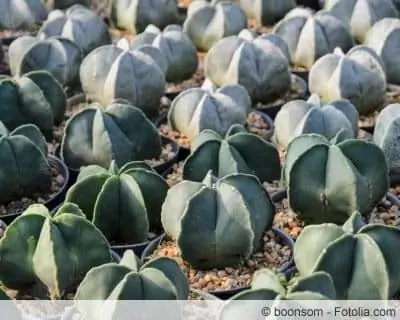
So that the ingredients of your cactus soil are mixed together perfectly, it is advisable to put them in smaller quantities on a piece of foil and then mix well by hand. However, when mixing, you must ensure that the clay or clay does not become too finely crumbly. However, you can crumble the peat, coconut fibers or xylitol. It should be noted that coconut fibers should first be soaked in clear water so that they are easier to process. In addition, the fibers gain a lot of volume when combined with water. However, the fibers should not be too wet when mixed with the other ingredients. It is also recommended to let the cactus soil stand for a few days and mix it well again and again before planting your cacti.
Frequently asked questions
Why do some people add rhododendron soil to their cactus soil?
Since rhododendron soil has a significantly lower pH value compared to conventional potting soil, it is ideal for increasing the acidity of cactus soil.
Can I use cheap cactus soil as a base for my own soil?
It is actually a good idea to use commercially available cactus soil as a kind of base and then “refine” it specifically for your own cacti. However, we strongly advise against cheap no-name products, as they are usually of inferior quality and often contain harmful substances.
Can I mix compost into my cactus soil?
In principle, there is nothing wrong with adding compost, as long as the compost is ripe and its pH value harmonizes with the other components of the soil.


